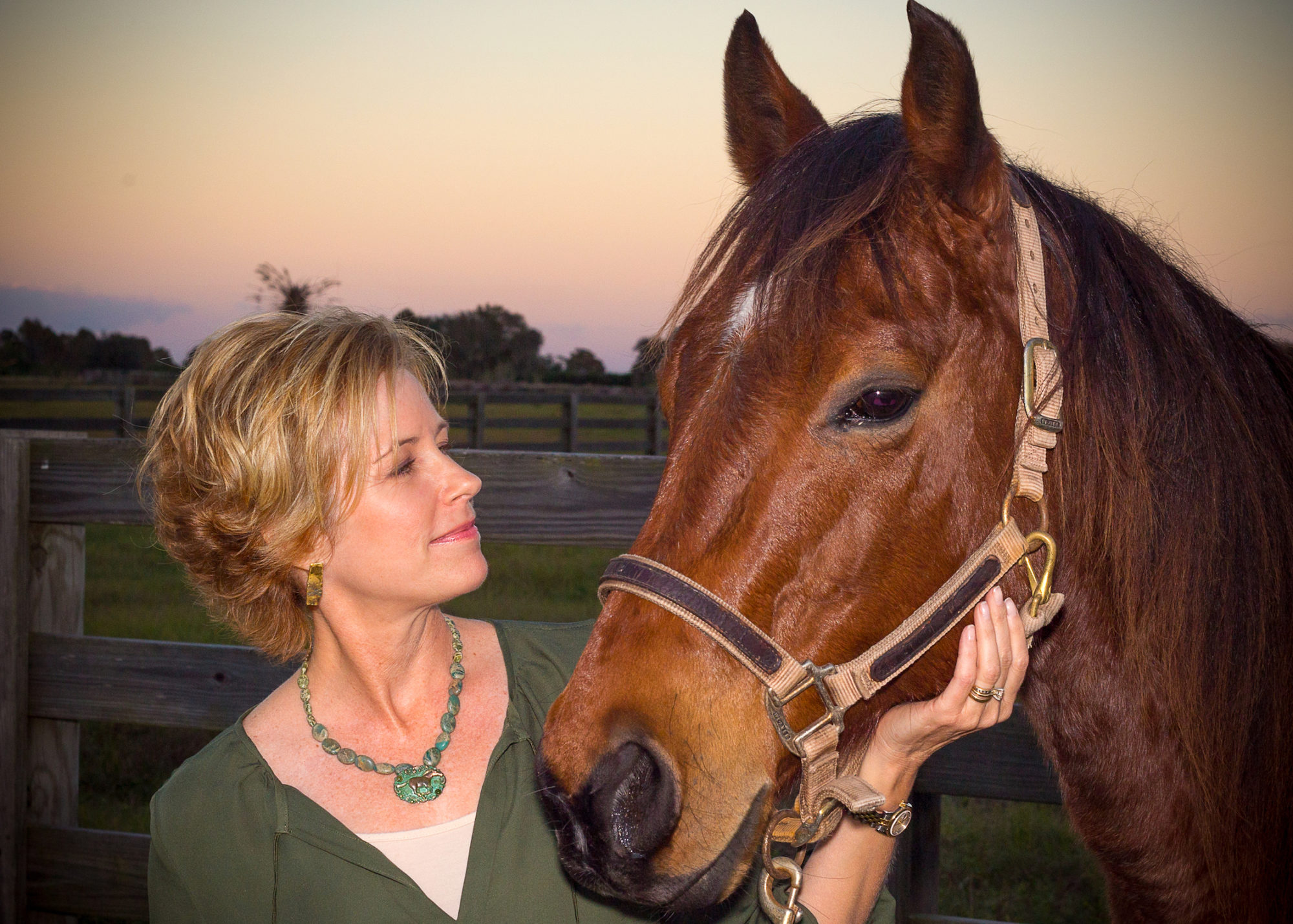As many of you know, I’m a horsewoman following in the footsteps of my mother, grandmother, and my Mom’s Aunt Fay, a legendary ranchwoman. Photos I have seen through the years of these women on horseback symbolize to me freedom, connection and partnership. While I have loved being in the presence of horses since childhood (What little girl doesn’t dream of having a horse?), I didn’t own my first horse until 2011, following an equine-inspired vacation moment with my husband.
When I brought Blue, my beloved quarter horse home to our ranch, I had a lot to learn about responsible horse ownership. What I didn’t realize at the time was how many lessons I would learn about myself and my leadership style through my relationship with Blue. I’m sharing two of those lessons with you in this column.
Blue’s recent 20th birthday was the inspiration for sharing these lessons. He has taken me on many joy-filled journeys around our ranch and he has also taken me on a deeper emotional and spiritual journey during our years together. Understanding how you interact with a 1,200-to-1,500 pound animal that is up to 40 times more powerful than you are can teach you a lot about being courageous and your approach to leadership.
Leadership is inherently relational. Understanding how you interact with a horse and observing how they interact with each other reveals important lessons in leadership.
The first lesson I learned was the importance of being mindful of my energy when interacting with Blue. I noticed that when I was calm and confident, he was calm and confident. If I was anxious and restless, he mirrored that back to me. Horses are prey animals, guided by a strong self-preservation instinct. As prey animals, horses’ survival in the wild depended on their ability to “read” the behaviors and intentions of predators and react immediately to keep themselves safe. Domesticated horses have not lost this ability. Their default emotion is fear, making them highly sensitive to the person handling them.
At the time I brought Blue to our ranch, I was president of a marketing consulting firm. Because of the insight I had gained through my interactions with Blue, I began to take a keen interest in noticing the energy I was bringing to my leadership role at work. Was I bringing a since of calm and confidence to my team or anxiety and restlessness? What was the impact? Did I need to shift my energy to be more effective with my team and to create an environment where they felt supported and empowered?
This equine learning became even more important when I got my second horse – a thoroughbred rescue with a rough past named Peyton. Because of his background of severe neglect, he needed a calm, confident leader to feel safe and secure. When he was not getting that energy from me, he became visibly anxious and fearful. And if I reacted to him from a place of fear, the situation escalated.
Horses, like most people, are attracted to grounded, centered and coherent energy that indicates the landscape is safe for work and play. Leadership requires constant self-awareness, making it necessary to be mindful and in tune with your emotions. Leaders that are not aware of their emotions and how their emotions are driving their behavior can unknowingly create an environment of fear, chaos, and drama, rather than one of trust, collaboration, and respect. One of the most important responsibilities of a leader is to create an emotional field that provides the psychological conditions necessary for team members to thrive.
The second lesson I’ve learned from my horses and others is that herd leadership is very dynamic – and it is shared, not hierarchical. Observing herd behavior and interaction among horses with a sense of curiosity can provide us with a deeper understating of how the most highly effective teams function.
While the concept of shared leadership is a relatively new theory in organizational management, the fact is that in nature animals have been applying the principles of shared leadership for millions of years. Horses, for example, have existed on Earth for 45 million years, nearly 40 million years longer than humans. They have learned to be agile and adaptive to their changing environments by using shared leadership. If we pause to notice their herd behavior, their ancient wisdom and ways of being can help us lead more effectively and intelligently navigate change.
As the strengths of herd members emerge and varying styles are needed for different environmental situations, leadership is distributed and changes constantly. For example, the lead mare sets the direction and pace of the herd while the lead stallion keeps the herd together and protects it from predators. Some horses are passive leaders. They stay behind the scenes, quietly surveying, usually while eating. They will alert the herd if danger appears yet leave confrontation to stronger and more agile members of the herd.
Some members of the herd are active leaders, taking over when there are social issues that need to be resolved like when a new horse joins the group or another horse is picking on their best friend. Another horse might take a leadership role when it’s time for play by instigating races or a round of prancing.
A highly-functioning herd thrives through shared leadership and intentionally utilizing the members’ various strengths and styles to benefit the herd. The intent of herd leadership is to create unity, harmony, and collaboration while keeping the herd safe. Collectively, they create a safe environment and give herd members a sense of belonging and purpose.
This same team dynamic applies in many ways to the workplace. The most highly functioning teams have multiple leaders in clearly defined roles that leverage their strengths and workplace styles. Leadership is shared and collectively they create an environment of emotional safety that inspires trust and collaboration. When this dynamic is present, the team has confidence in its leadership and is able creatively respond and adapt to the changing environment.
As I pause to celebrate Blue’s 20th and my relationship him and his pasture companion, Peyton, I am grateful for the leadership lessons my equine educators have taught me and look forward to many more inspiring journeys together.
Grow with purpose.

